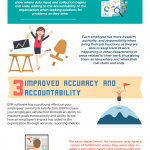Useful Machine Learning Models To Use For Your Ecommerce Store’s Data
Ecommerce has a symbiotic relationship with machine learning. Businesses are using every tactic machine learning has to offer better shopping experiences to their customers.With the advancement in technology comes more competition, and old marketing and customer retention techniques are not sufficient anymore. This has led businesses to adopt AI and machine learning models into their ecommerce platforms in order to create more effective marketing campaigns, create a better shopping experience, customer relationship management techniques and increase customer retention and generate more revenue. Machine learning algorithms can analyse the ecommerce store’s data to generate customer behavior patterns that help the business in various ways.
Here are some machine learning models that are useful in analysing a store’s data and apply it to create intelligent campaigns:
1. Automated RFM Segmentation:
Segmentation is a key part of any business’s marketing strategy. Especially in ecommerce, it is important to segment customers in order to identify behaviour patterns by comparing data sets. Automated segmentation makes the job much easier and segments customers using Recency, Frequency and Monetary Analysis (RFM). This model examines the customer’s activity by these three factors and divides the audience into groups that consist of loyal customers, champions, at-risk and hibernating customers. This helps businesses identify which customer to create more campaigns for in order to keep them with your business for long.
It also helps track the movement of customers from one category to another and provide you insights on which group to engage more and how. If your customers are hibernating, you can use the data provided by the analysis to give them personalised recommendations and create campaigns to move them into the active users lists.
2. Product Recommendation Engine:
Product recommendation engines use both AI and machine learning to generate recommendations and offers for customers based on their interests, past activity, feedback, shopping carts, wish lists, and browsing patterns. These engines rely on sophisticated algorithms that take into account massive amounts of data. The engine analyses the data provided to it and creates accurate customer profiles that help it predict the exact kind of product the customer wants or might be interested in. These engines can predict that customer’s intent and create recommendations that can be viewed on websites, apps, and ads featured on social media.
Personalised recommendations through social media is a recent marketing tactic made possible thanks to product recommendation engines. The right kind of recommendations gives a business the power to retain more customers and gain their loyalty.
3. Search Result Optimization:
Not all customers are keyword-savvy and know how to look for the exact thing they want. This is where search result optimization comes into play. This is the very basic and the most important step in on-site search- helping customers find products based on keywords.
This model analyzes the datasets and determines which products match the keywords and displays search results accordingly. Customers are displayed different options that go with their keywords and they can choose exactly what they are looking for. This is another way of recommending products that may go together with the thing the customer is interested in, by predicting recommendations based on the keyword. This method is called leveraging and helps increase more clicks, higher session times, and converts leads to customers.
4. Omnichannel Marketing Boosting:
It was a well known and tested fact that omnichannel marketing brings higher customer retention rate and lead conversion rates. Not only does it create successful marketing campaigns but also brings the business higher revenue.
This model integrates the various channels used by the business to interact with their customers and creates a convenient user experience. Omnichannel marketing takes a customer-centered view of marketing and creates personalized brand messages, and content that saves the trouble of hiring a marketing team to create that content. It carefully analyzes customer data to create engaging content based on their interests and past interactions.
Ecommerce is yet another one of the areas that are improved by machine learning. There are different models that can be applied for the benefit of a business depending on their needs, but these are the basic models that are effective in improving the user experience, creating personalized marketing campaigns and bringing in higher customer retention rates and revenue.
Cover Image by Freepik
















